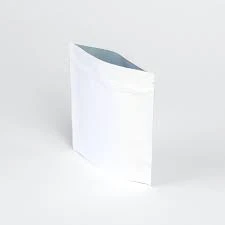- Afrikaans
- Albanian
- Amharic
- Arabic
- Armenian
- Azerbaijani
- Basque
- Belarusian
- Bengali
- Bosnian
- Bulgarian
- Catalan
- Cebuano
- chinese_simplified
- chinese_traditional
- Corsican
- Croatian
- Czech
- Danish
- Dutch
- English
- Esperanto
- Estonian
- Finnish
- French
- Frisian
- Galician
- Georgian
- German
- Greek
- Gujarati
- haitian_creole
- hausa
- hawaiian
- Hebrew
- Hindi
- Miao
- Hungarian
- Icelandic
- igbo
- Indonesian
- irish
- Italian
- Japanese
- Javanese
- Kannada
- kazakh
- Khmer
- Rwandese
- Korean
- Kurdish
- Kyrgyz
- Lao
- Latin
- Latvian
- Lithuanian
- Luxembourgish
- Macedonian
- Malgashi
- Malay
- Malayalam
- Maltese
- Maori
- Marathi
- Mongolian
- Myanmar
- Nepali
- Norwegian
- Norwegian
- Occitan
- Pashto
- Persian
- Polish
- Portuguese
- Punjabi
- Romanian
- Russian
- Samoan
- scottish-gaelic
- Serbian
- Sesotho
- Shona
- Sindhi
- Sinhala
- Slovak
- Slovenian
- Somali
- Spanish
- Sundanese
- Swahili
- Swedish
- Tagalog
- Tajik
- Tamil
- Tatar
- Telugu
- Thai
- Turkish
- Turkmen
- Ukrainian
- Urdu
- Uighur
- Uzbek
- Vietnamese
- Welsh
- Bantu
- Yiddish
- Yoruba
- Zulu
Comparing Vector and Raster Graphics Techniques for Better Design Choices
Vector vs. Raster Choosing the Right Graphic Type
In the world of digital graphics, two primary formats dominate the landscape vector and raster. Understanding the differences between these two types is essential for artists, designers, and anyone interested in visual communication. Each format has its own strengths and weaknesses, making them suitable for different applications.
Vector Graphics
Vector graphics are created using mathematical equations. They are composed of paths defined by a start and end point, along with other points, curves, and angles that dictate the shape of the image. Because of this mathematical foundation, vector images can be scaled to any size without losing quality. This scalability is a significant advantage when it comes to using graphics for various outputs, such as logos, icons, and illustrations.
Popular vector graphic formats include SVG (Scalable Vector Graphics), AI (Adobe Illustrator), and EPS (Encapsulated PostScript). Vector graphics tend to have clean lines and sharp edges, making them ideal for designs that require precision. Moreover, they are typically smaller in file size compared to their raster counterparts, making them easier to store and manipulate.
One of the most significant advantages of vector graphics is their editability. Designers can effortlessly change colors, shapes, and sizes without any degradation in quality. This flexibility allows for a more fluid design process, especially when dealing with projects that require multiple iterations.
Raster Graphics
vector vs. raster

Raster graphics, on the other hand, are composed of a grid of pixels, where each pixel represents a specific color. Common raster formats include JPEG, PNG, GIF, and BMP. Unlike vector images, raster graphics are resolution-dependent, meaning that when you scale them up, they can become pixelated and lose detail. This limitation makes raster graphics less suitable for applications requiring enlargement.
Raster graphics excel in capturing complex images, such as photographs and detailed artwork. The sheer detail and richness of color that can be achieved with raster images are unparalleled, making them the go-to choice for photographers and digital painters. Raster images are best suited for high-resolution displays and print media where detail is paramount.
One downside of raster graphics is the larger file sizes, particularly for high-resolution images. Additionally, editing a raster image can be more challenging; changes can result in a loss of quality, especially if the image is resized multiple times or manipulated extensively.
Choosing Between Vector and Raster
The choice between vector and raster graphics ultimately depends on the project requirements. For logos, icons, and illustrations that need to remain crisp and scalable, vector graphics are the clear choice. They allow for flexibility in design and are essential for print work that varies in size.
Conversely, when working with images that require intricate details, such as photographs or digital artwork, raster graphics are preferable. They provide the depth and detail necessary for high-quality visual outcomes, especially in web and print media.
In conclusion, understanding the distinctions between vector and raster graphics is crucial for effective graphic design. By recognizing the strengths of each format and leveraging them appropriately, designers can enhance their work and create visually compelling materials tailored to their specific needs. Whether you opt for the versatility of vector graphics or the detail of raster images, each format plays a unique role in the dynamic world of visual arts.













